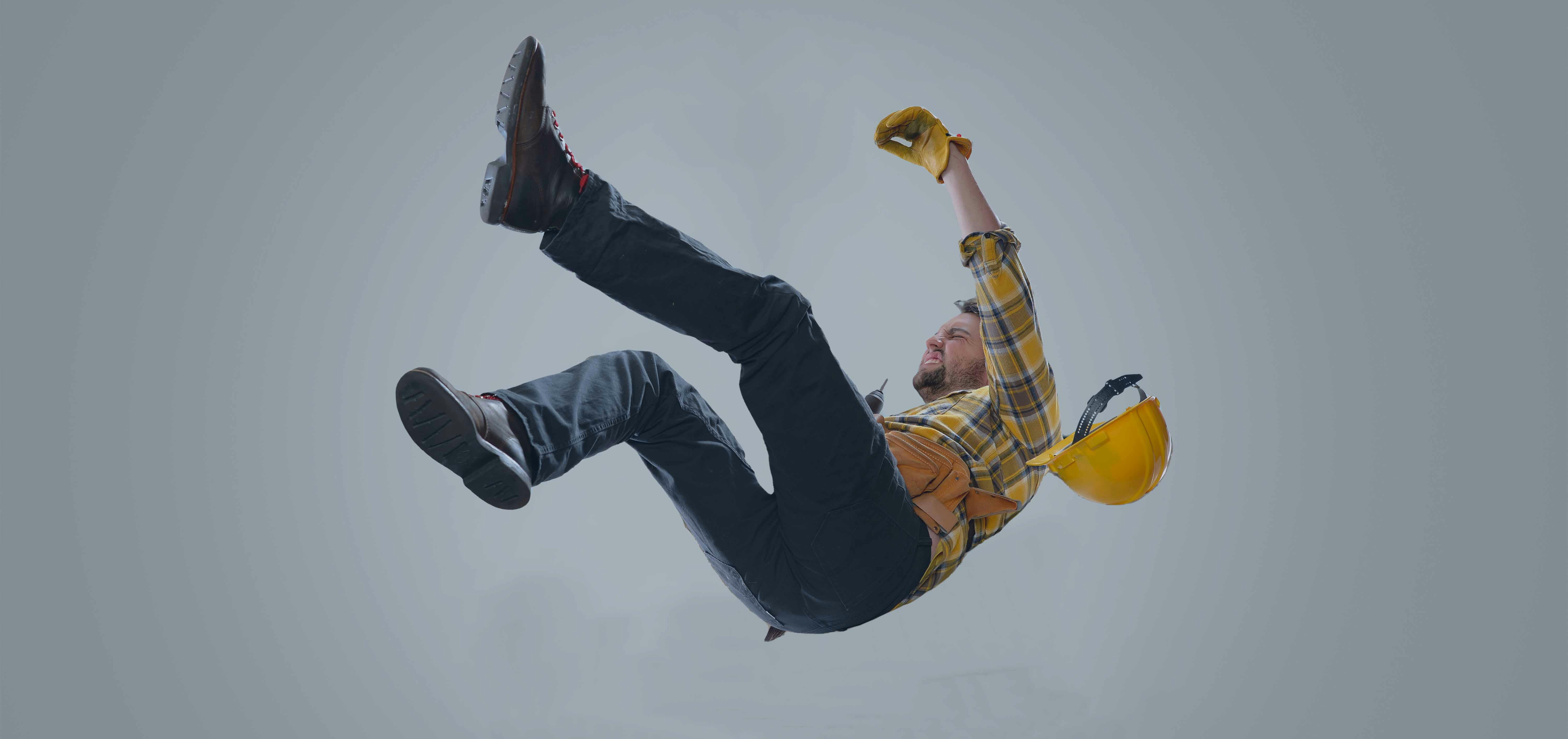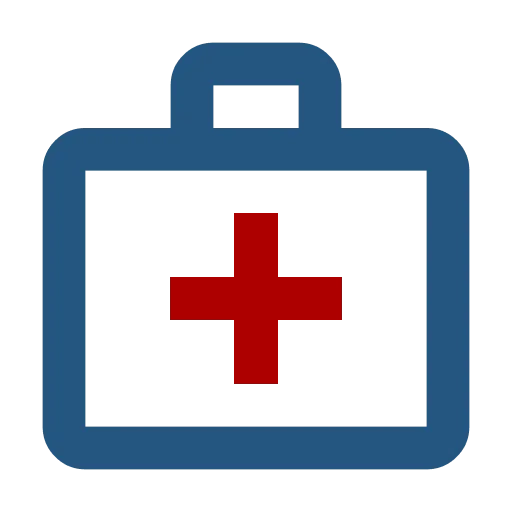Accident/Traumatology


Sprains
Sprains
A sprain involves injury to the ligaments that hold a joint when it is forced to move beyond its normal range of motion.
Ankle sprains are the most common, but sprains of other joints such as the knee, fingers, or wrist can also occur.
The severity of a sprain can vary from a simple stretch to a complete rupture of the ligaments and is sometimes accompanied by bone avulsions or fractures.
Symptoms of a sprain include pain, swelling, and difficulty using the joint (difficulty walking in the case of an ankle sprain).
Sometimes, if the sprain is more severe, there can be bruising, deformity, or decreased sensation in the affected limb.
Immediate care for a sprain includes:
- resting the joint
- applying ice (cold pack or ice wrapped in cloth, in periods of 15 minutes every 1 to 2 hours)
- supporting the joint with an elastic bandage or splint
- elevating the limb (especially in the case of an ankle or knee sprain)
- pain relief medications such as paracetamol and ibuprofen
The need for radiological examinations will depend on the severity and progression of symptoms.
Your doctor will determine the type and duration of any immobilization based on the severity of the sprain.
Mild sprains usually recover quickly, but more severe cases may require stricter and longer immobilization. Sometimes rehabilitation through physical or occupational therapy will be necessary to achieve good joint mobility and stability.
It is rare for a sprain to require surgery, and very rarely in emergency cases. The main indications are a complete rupture of one or more ligaments as well as chronic instability of the joint.

Fractures
Fractures
A blow or fall can cause bone fractures, i.e., one or more bones that break.
There are different types of fractures, classified by shape and extent, the affected bone, and any fragment displacement. We also distinguish between open fractures – where the bone fragment causes a wound on the skin – and closed fractures – where the skin remains intact.
The symptoms of a fracture are pain, local swelling, and difficulty moving the limb or affected area. Often, a deformity or a haematoma can be seen in the injured area.
To confirm a fracture, the examination of choice is an X-ray. Sometimes, it will be necessary to conduct other examinations, such as a CT scan.
The treatment of fractures depends on their location and severity. Mild fractures without bone displacement can be treated with immobilisation in a cast or a rigid splint. More severe fractures, those affecting a joint, or with bone displacement often require surgery with the placement of plates, screws, a nail (a rod inside the bone), or an external fixator.
A fracture usually takes several weeks to several months to heal. Rehabilitation, with physiotherapy sessions, is often necessary to regain good mobility, strength, and stability of the affected area.

Dislocations
Dislocations
A dislocation of a joint is the displacement of a bone that comes out of its usual place after a fall, a blow, or a wrong movement. Any joint can dislocate. The most common are shoulder dislocations, but fingers, kneecaps, hips, jaws... can also dislocate. Sometimes the bone spontaneously returns to its place in the joint, but more often a reduction by a doctor is necessary.
Dislocations are sometimes associated with fractures, and it is often recommended to take X-rays to rule out a fracture before repositioning the joint.
A joint that has already dislocated is more prone to dislocate again because the ligaments that hold it in place have loosened. Therefore, it is sometimes necessary to immobilise the joint for several weeks after reduction to minimise this risk. Additionally, an appropriate physiotherapy programme helps prevent recurrences.

Head injuries
Head injuries
A head injury can occur during a fall or from a blow, for example during sports practice, or from a car or bicycle accident.
The brain is well protected inside the skull and is surrounded by a fluid, cerebrospinal fluid, which absorbs the energy of impacts. However, if the impact is too strong, this is not enough and the brain can hit against the skull bone, which can cause damage: this is called cranial trauma or craniocerebral trauma. Cranial trauma can be mild, moderate, or severe.
Concussion is the mildest form of head injury. The damage is usually temporary. Symptoms of concussion include confusion, memory loss, headache, balance problems, nausea and drowsiness. Sometimes, if the concussion is more severe, the person may briefly lose consciousness.
After a mild head injury (concussion), it may happen that some symptoms persist for several weeks to months, such as fatigue, headache, concentration and memory problems, balance problems and sleep problems. It usually returns to normal over time, but can be disruptive to daily activities for a period of time.
Radiological examinations are not always necessary, but sometimes it is advisable to perform a CT scan or MRI to ensure there is no bleeding or visible brain damage.
After a concussion, it is important to rest in a quiet environment and avoid exposure to screens, bright light and loud noises, as well as activities that require concentration. Normal activities can be gradually resumed, depending on symptom development. Returning to sports activities should be discussed with a doctor and should not occur before at least a week after the accident, gradually and only if the person no longer has any symptoms.
Moderate or severe injuries differ in the severity of the coma they cause, requiring professional emergency services, and often have dramatic consequences, making prevention so important.
Among the things that can be done to prevent head injuries are wearing a helmet during any sports activity that may lead to falls or blows (cycling, skiing, scootering, skateboarding, etc.), as well as fastening the seat belt during every car ride.

Injuries to the chest and abdomen
Injuries to the chest and abdomen
The chest mainly consists of ribs, attached in front to the sternum and at the back to the spine. It protects internal organs such as the lungs and heart, but also large blood vessels, the oesophagus, trachea, etc.
An injury to the chest can cause damage to the wall as well as the organs inside the chest. The most common injuries involve the chest wall, particularly the ribs. The severity ranges from isolated rib contusions, which are generally mild but often painful, to serial fractures that can affect a person's ability to breathe. Such injuries, which may be accompanied by other internal injuries, require an urgent call to 144.
Abdominal injuries can also be mild and affect only the abdominal wall (skin, muscles), but they can also be much more serious, with injuries to internal organs (for example, the spleen, liver, or large blood vessels). These internal injuries are caused by a strong impact, for example, against the bicycle handlebars, or in the case of so-called penetrating wounds from knives or firearms. Internal injuries can cause serious bleeding, and patients need the help of emergency and professional services.